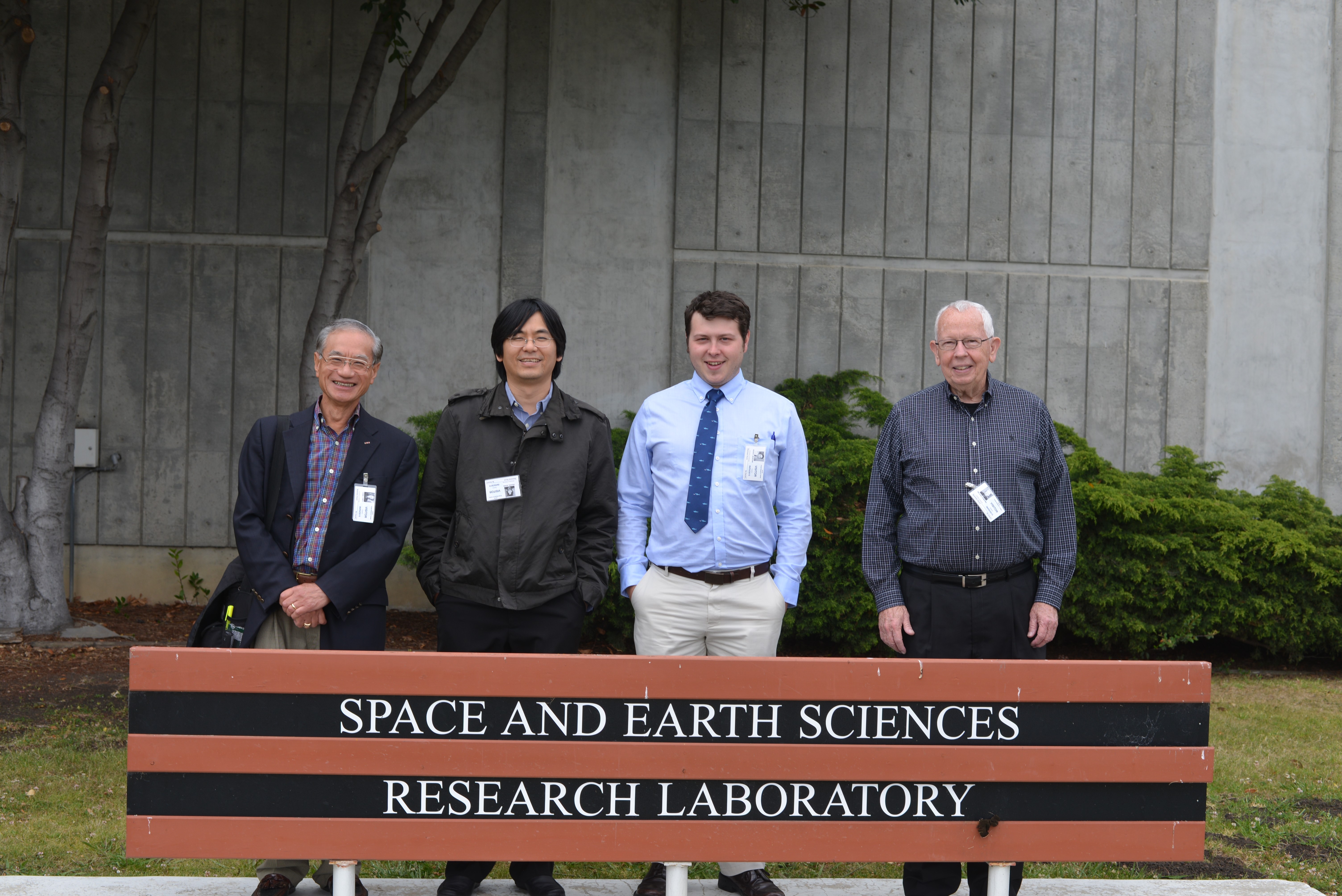Microelectronics-Photonics Graduate Student Awarded Bridge Fellowship

From left to right: Yupo Chan of the University of Arkansas at Little Rock, Adam Huang, Morgan Roddy and Ed Wilson of Harding University pose together at the NASA Ames Research Center
Morgan Roddy, a doctoral student in microelectronics-photonics, has been awarded an Arkansas Space Grant Consortium Bridge Fellowship.
The year-long fellowship provides Roddy $12,500 to support his research. It also allows him to visit the NASA Marshall Space Flight Center in Huntsville, Ala.
Roddy's research examines in-space micropropulsion for small spacecraft. The space industry is starting to shift from using large satellites to microsatellites. The microspacecraft are much more compact than conventional satellites and have the luxury of 'hitching a ride' on launch vehicles that are carrying much larger payloads. This reduces launch costs from hundreds of millions of dollars to hundreds of thousands of dollars.
Another advantage of the smaller satellites is that a cluster of them could link together to carry out the same mission of a larger space vehicle. This is beneficial because if a component of the small spacecraft system is damaged, only one microsatellite would need to be replaced. When a large satellite is damaged, the entire system must be replaced.
"Smaller spacecraft allow for meaningful science to be conducted on a smaller budget," Roddy said. "The lower cost makes them more accessible to the masses. If we can develop a small efficient propulsion system, we can take interplanetary travel from something only a handful of organizations can afford to a practical endeavor that many universities can afford."
One of the biggest difficulties in the development of an agile microspacecraft is the creation of a small-scale propulsion system. The fiery chemical propulsion systems associated with a traditional spacecraft are not practical for a microsatellite. Roddy has made the development of a suitable propulsion system the focus of his research.
Recently, with the help of his Research Experience for Undergraduates mentee Seth Vaughan, the Doctoral Academy Fellow built a low temperature co-fired ceramic prototype thruster. The device would be used as part of a propulsion mechanism for a microspacecraft. The Bridge Fellowship will allow Roddy to develop a fuel cell to go with the thruster, which will result in a fully functioning, prototype-level propulsion system.
Roddy and his adviser Adam Huang, associate professor of mechanical engineering, have partnered in their research with Harding University, University of Arkansas at Little Rock and NASA's Ames Research Center. The pair plans to gather more data about their propulsion project when they visit the Marshall Space Flight Center later this year.
Contacts
Amanda Cantu, director of communications
Graduate School and International Education
479-575-5809, amandcan@uark.edu